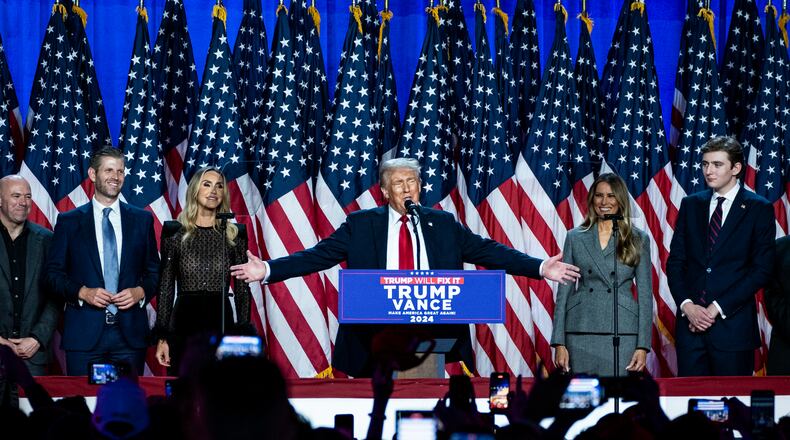“It’s a great honor to be part of this,” said Jones.
Credit: CONTRIBUTED
Credit: CONTRIBUTED
Former President Trump, a Republican, and his running mate, U.S. Sen. JD Vance, R-Ohio, defeated Democrats Vice President Kamala Harris and her running mate Minnesota Gov. Tim Walz in the Nov. 5 general election.
Trump and Vance won Ohio by 11 points.
Each major party picks the state’s electors but since Trump and Vance won the majority of votes in Ohio, only the Republican electors gather to participate in the Electoral College process.
Scott, a former Kettering councilman and ex-Montgomery County Republican Party chairman, served as the 2016 Trump campaign’s first state director in Ohio and in Trump’s first administration was the U.S. Small Business Administration’s Great Lakes administrator.
Credit: Nick Graham
Credit: Nick Graham
Jones was an early Trump supporter and likewise served as a previous Trump elector. In 2016 he said he received thousands of letters to his home after the election urging him to be a “faithless elector” and vote against Trump.
“I set a big fire in my backyard...and I smoked a cigar, had the cows in the background, and I did a video of me not opening these letters and throwing them into the fire pit,” he said. “I don’t believe that’s the same way it was eight years ago. The victory was so large.”
The Ohio Republican Party’s central and executive committees met on Aug. 16 to nominate the presidential electors for this year’s election. The number of electors corresponds to the number of congressional districts and the two U.S. Senate seats in Ohio.
The list of electors also includes current Ohio Republican Party Chairman Alex Triantafilou, and former party chairs, Jane Timken and Robert Paduchik, who also served as a former campaign director for Trump in Ohio.
Ohio’s 56th Electoral College convenes in the state Senate chamber at the Ohio Statehouse on Dec. 17.
“Each state’s electors’ votes are recorded on a Certificate of Vote, which is prepared at the meeting by the electors. The Certificate of Vote is sent to the United States Congress, where the votes are counted, and to the National Archives and Records Administration (NARA), as part of the official records of the Presidential election,” according to a news release from Ohio Secretary of State Frank LaRose.
U.S. voters indirectly elect the president. When voters choose the candidate on the ballot they are actually picking the candidate’s preferred electors in their state. The winning candidate’s electors for each state then cast votes in the Electoral College, which consists of 538 electors. A majority of 270 electoral votes is required to elect the president.
Sometimes, as in Trump’s 2016 win against Democrat Hillary Clinton, and Republican George W. Bush’s 2000 win over Democrat Al Gore, the person who won the popular vote doesn’t win the Electoral College vote.
This year Trump won both the popular vote and enough states to win the Electoral College vote 312-226, according to the Associated Press. Counting isn’t complete in all states but currently the popular vote stands at 50% for Trump and 48.4% for Harris, according to AP.
On Jan. 6 the U.S. House and Senate will convene to count the Electoral College votes and Harris, who serves as president of the senate, will preside over the count and announce the results of the Electoral College vote.
Josh Sweigart contributed to this report.
Follow @LynnHulseyDDN on Facebook, Instagram, TikTok and X.
About the Author



